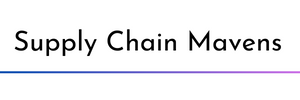“Talking ‘bout you and me and the games people play.” -- Joe South
Changes in demand are a way of life in supply chain. In the post-Covid world shortages have increased exponentially, and with the additional scarcities caused by the War in Ukraine and issues related to climate change including droughts, floods, and mega-hurricanes, not a single industry today is immune to experiencing shortages of some kind. Supply chain shortages, like most actions, have consequences. These consequences include finding new sources of supply, developing new relationships with suppliers, and ultimately dealing with price increases that inevitably ensue. Supply chain shortages are the result of scarcity. Basic macroeconomic theory states that as resources become scarce the price for that resource increases. It’s just a manifestation of supply and demand. Scarcity of resources means that as the demand for that resource increases, so will the cost to obtain that resource.
A recent post by Abe Eshkenazi on the SCM Now Impact blog reported that the cost of candy this past Halloween increased about 13 percent, its largest-ever annual jump, mainly due to the scarcity (and therefore higher cost) of flour, sugar, and labor. To help make these increases tolerable, manufacturers sometimes play shell games with package sizes and even the size of the product itself. Who hasn’t noticed that the size of tuna cans has slowly shrunk over the years? Or that candy bars are smaller? And what happened to a pound of coffee at the grocery store? (Spoiler alert – it is now 10 ounces!) And I will swear on all the Quarter Pounders I’ve ever eaten, that Egg McMuffins were much larger when they were first introduced 50 years ago.
But this isn’t some huge deep-state conspiracy designed to fool consumers. For decades, organizational survival many times has depended on these acts of balancing price and quality. Supply Chain managers have accomplished this by reducing product and package size, substituting less expensive ingredients and parts, developing long term procurement contracts, improving packaging to ship less air, used postponement to delay product differentiation, and found other countless other ways to keep costs in line, including manufacturing products overseas. The results have been amazing. I remember when my father brought home our first microwave oven in the early 1970’s. It cost about $500 then, which is over $3,200 in today’s dollars. Last month, when my wife and I moved to costal Georgia, we bought a new microwave for our kitchen. It cost $70 and has ten times the functionality of the one my dad bought 50 years ago.
But today our supply chains face numerous challenges on all fronts. The most serious is inflation. In the Harvard Business Review article, 6 Strategies to Help Your Company Weather Inflation, authors Jason Heinrich, Simon Henderson, Tom Holland, and Megan Portanova recommend the following:
Get Spending Visibility – Per the authors it “enables the right level of accountability throughout the organization…” Visibility of the spending process shines a light on areas where there is ambiguity and lack of clarity. It is the Holy Grail of supply chain management.
Differentiate Between Strategic and Non-Strategic Spending – Avoid making cuts that are not in line with the company’s broad-based strategy. Making such cuts can have a disastrous effect on the organization. Managers must know where to reduce costs that will not affect the overall direction of the organization. For example, cutting investment in Information Technology while in the middle of a digital transformation could harm the organization in the long run by making it less competitive.
Unpack the Drivers of Spending – As spending becomes visible, it is important to gain an understanding of what is driving it. Separate the price paid from the quantity and frequency of the purchases. I recommend developing a hierarchy of importance by using a Kraljic Matrix or other ranking method.
Reduce Consumption – One way to reduce costs as well as the time required to implement them is by using supply chain control towers and cross functional collaboration. By creating processes and eliminating silos many companies have not only reduced the cost of purchases, but also taken large chunks of time out of the operation.
Eliminate Work – In the current environment of high labor costs and labor shortages, consider simplifying, streamlining, and reorganizing work to remove repetitive motion and wear and tear on the human body. By redesigning work so that it is less strenuous physically and more challenging intellectually, companies can not only make work safer but also make it more engaging. Also, an engaged workforce has higher morale and spends more time working and less time out sick or injured.
Automate – Speaking of jobs that are repetitive, dangerous, and therefore unpopular with workers, the best recommendation is to automate them. As distribution centers are updated, they will contain fewer workers and more automation to move, store, pick, pack, and load materials. People will fill the roles of decision makers and will do many of the dexterity tasks that machines can’t do.
These six strategies are not the only solutions companies can use to keep rising costs at bay. There is no magic bullet for business success. It takes a coordinated investment of resources, people, and process improvement by clear-minded executives who have the best interests of their organization, employees, customers, and environment at heart. But the key is to act now.
Gary welcomes your comments and feedback. You can email him at garys@supplychainmavens.net.


